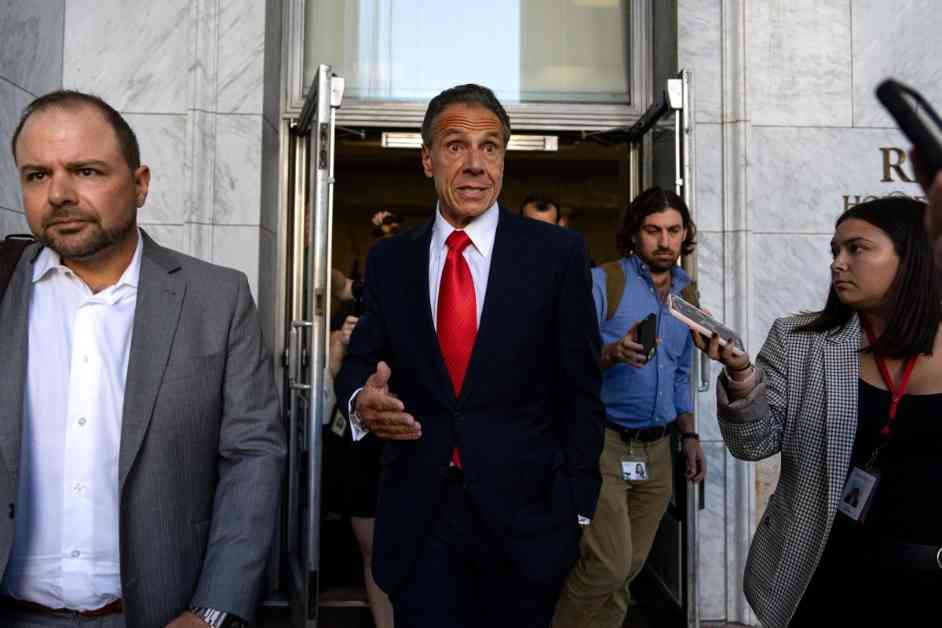In the bustling city of New York, the political landscape is once again abuzz with the latest developments in the mayoral race. The recent polls have unveiled an intriguing twist, with former Governor Andrew Cuomo taking the lead in the Democratic mayoral primary field, despite not officially throwing his hat into the ring. The survey, conducted by the Manhattan Institute, a conservative think tank, sheds light on the preferences of 618 New York City voters, encompassing a diverse demographic beyond just Democrats.
Cuomo, a familiar figure in New York politics who resigned amidst a storm of allegations in 2021, has emerged as a frontrunner with 30% of the first-choice votes in the ranked-choice contest. This latest victory for Cuomo echoes his consistent lead in previous polls, fueling speculation about his potential candidacy. His spokesperson, Rich Azzopardi, emphasized Cuomo’s enduring commitment to the city, portraying him as a true ‘Queens boy’ dedicated to New York’s prosperity.
The poll results reveal an interesting dynamic, with Mayor Eric Adams trailing behind Cuomo by 16 points, securing 14% of the votes. Former city Comptroller Scott Stringer follows closely with 11%. In a simulated ranked-choice scenario, Cuomo solidifies his position with 53% of the final vote, showcasing his broad appeal among voters. The system, designed to ensure a candidate secures over 50% support, presents a strategic challenge for the contenders as they navigate the electoral landscape.
As the race intensifies, Adams faces an uphill battle, grappling with unfavorable ratings among city voters. Despite his assertions of a deep connection with New Yorkers, Adams’ appeal seems to have waned, with 69% of voters expressing negative sentiments towards the mayor. The shadow of federal indictment looms over him, casting a shadow on his campaign.
Adams, undeterred by the polls, draws inspiration from Andrew Yang’s unexpected victory in the 2021 race, emphasizing the unpredictable nature of early polling. He underscores his grassroots approach, emphasizing his commitment to uplifting New Yorkers and building a better future for the city. However, with Cuomo’s resurgence and the competitive field, Adams faces a formidable challenge in winning over the electorate.
The narrative of the mayoral race unfolds against the backdrop of contrasting personalities, political legacies, and the aspirations of New Yorkers. As the candidates vie for the city’s top office, the dynamics of the campaign promise a riveting spectacle of ambition, resilience, and the pursuit of public service. With each poll, debate, and campaign event, the story of New York’s mayoral race continues to captivate the hearts and minds of its citizens, shaping the destiny of the city.

